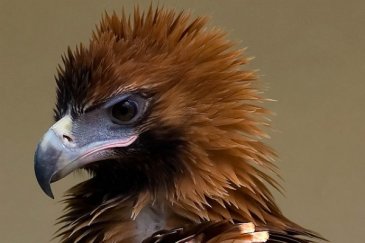New research has revealed that the diet of Australia's wedge-tailed eagle is far more varied than previously thought - and definitely isn't reliant on rabbits.
Wedge-tailed eagles are Australia's largest birds of prey, with wingspans that can reach up to 2.3 metres. But despite their size, there's still a lot scientists don't know about the creatures.
Until recently, many researchers believed that wedge-tailed eagles were dependent on eating European rabbits - an introduced species that's devastated Australian ecosystems.
In Australia a disease called rabbit haemorrhagic disease was spread among the rabbit population in the '90s and drastically reduced their numbers, but there's been controversy over whether the rabbits need to be protected in order to maintain eagle populations.
As columnist Ian Warden writes for the Canberra Times:
"This belief means that there are fears that when the biological control agent rabbit haemorrhagic disease is used with great success against the accursed rabbits, our eagles, bereaved of an important food, are sorely afflicted."
To solve the mystery of the eagle's diet once and for all, researchers from the Institute for Applied Ecology at the University of Canberra in Australia have reviewed the literature, and concluded that they have a much more varied diet than previously thought.
Importantly, a study conducted by Master's student Esteban Fuentes from the Institute for Applied Ecology between 2002 and 2004, when rabbit population numbers were at their lowest, revealed that not only were the birds surviving without rabbits, they were breeding better than ever.
To find out what they were surviving on, he studied the "castings" that eagles had vomitted up - castings are big pellets made up of the inedible parts of what they've just eaten, such as bones and fur.
These studies revealed that the eagles had eaten 57 prey species, "including 19 mammals, 20 birds, seven reptiles and one crustacean".
Dominating the diet was the eastern grey kangaroo and lots of native birds, such as Galahs.
"There is little evidence that eagles depend heavily on rabbits as prey. Instead, as rabbits decline, more kangaroos, reptiles and birds are eaten," write the authors of the review, published inWildlife Research, and led by Jerry Olsen from the Institute for Applied Ecology.
Their research also showed that, despite the fact that rabbit populations have declined by around 90 percent in Australia in recent years, there's been no damage to eagle populations and breeding success.
"Rather than perpetuating the idea that high populations of rabbits are needed for wedge-tailed eagle conservation, resources would be better re-directed into understanding continental-scale eagle population dynamics. This would provide a more rational framework to assist decisions on future biological control agents for rabbits," they write.
Love the environment? Find out more about the world-leading research happening at theInstitute for Applied Ecology and follow them on Facebook for more updates.
Source: Widlife Research, Canberra Times
